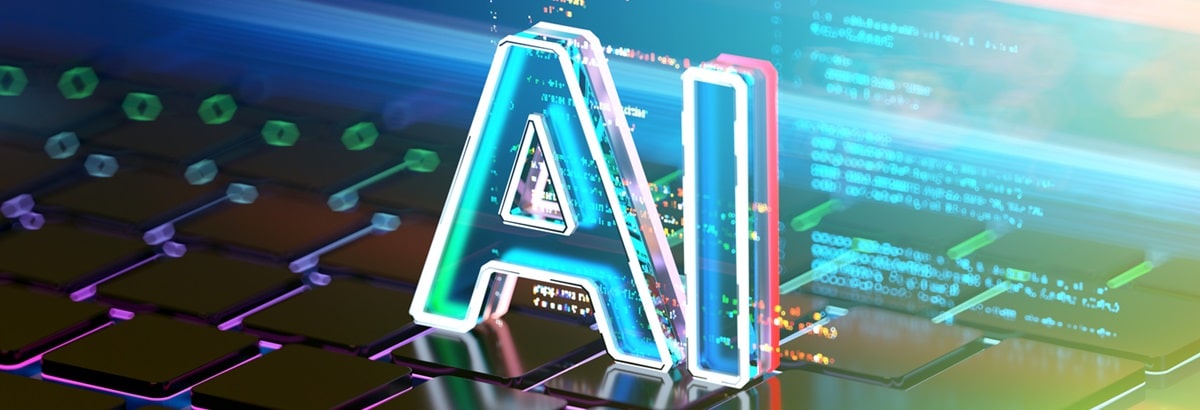Cristina Leon Vera | 02/09/2025
Artificial intelligence is advancing at an unprecedented pace and is already reshaping the global order. The United States and China are leading a technological rivalry that could define the 21st century. In this global race, companies, governments, and citizens are being swept toward a future as full of promise as it is of uncertainty.
Over the past decade, artificial intelligence (AI) has evolved from a scientific promise to an everyday presence. From virtual assistants to recommendation systems, AI is already shaping decisions, habits, and human relationships. It is no longer a tool of the future—it has become an omnipresent reality.
The era of generative models
What has truly marked a turning point is the development of so-called foundational models, such as transformers, capable of processing text, images, and voice with remarkable coherence. These architectures, based on neural networks, have driven a new generation of systems such as GPT-4o, Claude, Gemini, and LLaMA that generate hyper-realistic images, music, or professional-quality videos from simple written instructions.
The progress is dizzying. Every few months, a new version pushes the boundaries of what is possible. In China, models like DeepSeek-V3 are already competing in performance with the best American models, but at a fraction of the computational cost. In February, OpenAI released GPT-4.5, an evolution with greater multimodal capabilities and a 128,000-token context window, enabling the processing of lengthy documents with near-human understanding.
In May, Google DeepMind turned heads with Alpha Evolve, a system capable of rediscovering complex mathematical algorithms. Meanwhile, Anthropic has developed Claude 3.5 Sonnet and has begun experimenting with autonomous agents that can operate software, browse the Internet, or carry out complex tasks with minimal supervision, although no fully autonomous public agent is available yet.
The new tech race
This progress has triggered a global race that goes beyond innovation. At its core, it is a battle for leadership in the next great industrial revolution. The Asian giant and the United States are at the forefront of this struggle for digital supremacy. While the former leads in the volume of scientific publications and patents, the latter still holds the edge in research quality and corporate leadership.
However, that gap is narrowing. Experts estimate that the technological gap has narrowed to just a few months in key areas such as language generation and computer vision.
This competition has sparked a new trade war, where the contest is not only over chips and data, but also over regulations, talent, and control of critical digital infrastructure.
U.S. and China, face to face
The landscape is dominated by colossal players. OpenAI, backed by Microsoft, has been a pioneer in the global expansion of language models. Google DeepMind leads in the development of general-purpose AI, with breakthroughs like AlphaFold, which successfully predicted the three-dimensional structure of proteins—a challenge that biology had been trying to solve for decades.
Meta, with its newly established Superintelligence division, has recruited some of the top talents in the field in a determined effort to achieve artificial general intelligence (AGI).
China, meanwhile, has woven a collaborative network among private companies, research centers, and government agencies. Institutions like the Beijing Institute for General Artificial Intelligence (BIGAI) are betting on innovative paradigms of autonomous learning. Startups like DeepSeek not only compete in terms of results but do so with significantly lower budgets: between 5 and 6 million dollars, compared to the over 100 million dollars spent on large Western models.
Other applied models with significant economic impact have also emerged. A prominent example is Tongyi Qianwen, developed by Alibaba and used in e-commerce, customer service, and productivity. Independently, the startup Monica AI introduced the autonomous agent Manus, capable of performing complex tasks without continuous supervision.
Opposing policies
In this context, governments are beginning to play a central role. The U.S. administration has recently launched a national action plan featuring public investments, export restrictions, and strategic partnerships.
China, on the other hand, advocates for a multilateral governance model based on international cooperation and respect for each country’s sovereignty. It has proposed common frameworks to promote ethical, safe, and equitable development of this technology, although its approaches increasingly contrast with Western perspectives.
AI for everyone
All this technological progress is already impacting everyday life. Most people interact daily with AI systems, often without realizing it. From apps that suggest lower prices to tools that automatically summarize emails, correct texts, or enhance photographs. On mobile devices, features like Apple Intelligence and the new Galaxy AI enable real-time conversation translation and the creation of personalized images from simple descriptions.
Additionally, generative AI can now run locally. The SD 3.0 Medium model, developed by Stability AI and AMD, enables high-quality image generation directly on laptops without an Internet connection, democratizing creative access.
Even in sensitive fields like healthcare, AI is beginning to make a difference. It’s used to identify diseases before symptoms appear, develop personalized educational plans tailored to each student’s learning style, and assist people with visual or cognitive disabilities. Microsoft, meanwhile, has developed MAI-DxO, an experimental medical AI system that has surpassed doctors in accuracy for complex clinical diagnoses, an advancement that could transform healthcare.
However, the expansion of these tools also raises questions: Who controls these systems? What happens to personal data? Which professions will disappear? How can we ensure that machine decisions are fair?
The horizon of superintelligence
All signs point to the next major milestone being the development of artificial general intelligence (AGI): systems capable of matching—and eventually surpassing—human performance across a wide range of cognitive tasks. Once that threshold is reached, it opens the door to possible superintelligence, with capabilities that could exceed human abilities in reasoning, creativity, and autonomy.
What just a decade ago seemed like science fiction is now a central topic in laboratories, international forums, and government offices. However, the global debate is deeply divided. While some advocate for accelerating development, others call for a pause or strict regulation. From figures like Elon Musk, Sam Altman, and Yoshua Bengio to groups of independent researchers, there is a growing consensus on the urgent need to establish a global governance framework that ensures safety, transparency, and equitable distribution of benefits.
The dilemma is clear: stopping could mean losing the race, but moving forward without coordination could trigger incalculable risks. The dispute is no longer just technological or scientific, but deeply geopolitical. At stake is not only who will dominate the next great industrial platform, but also who will set the rules, defend their values, and lead the new digital order. What’s at stake is a transformation so profound it could redefine not only the economy and international relations but even the very nature of humanity itself.





